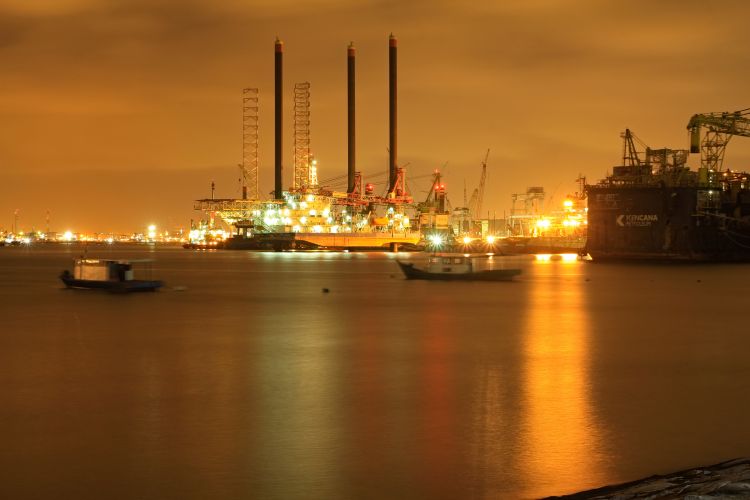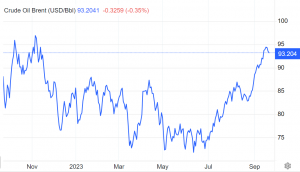
While countries around the world grapple with the challenge of containing inflation, policymakers now face a new concern—soaring crude oil prices. Crude oil has surged to a 10-month high, sparking fears of a resurgence in inflation. The OPEC+ alliance continues to implement supply cuts, tightening the global oil market. As a result, the global benchmark Brent crude has topped $96 per barrel for the first time since November.
There is now a strong expectation that crude oil prices could soon touch the $100 per barrel mark. Since mid-June, crude oil has witnessed a remarkable 25% increase in prices, driven by collaborative efforts between Riyadh and Moscow to limit exports and boost prices. This upward trajectory is further buoyed by positive economic outlooks from the world’s two largest economies—the United States and China.
READ | Generative AI: ChatGpt is reshaping jobs, not killing them
Impact of high crude oil prices
The surge in energy costs will pose a significant challenge for policymakers and central bankers, many of whom have recently raised interest rates in an attempt to curb inflation. This week is crucial for monetary policy decisions, including those of the Federal Reserve, and India is also compelled to review its monetary policies. The surge in crude oil prices is likely to delay potential interest rate cuts and will test the government’s ability to manage inflation in the lead-up to critical state and national elections next year.
India heavily relies on foreign imports to meet its energy needs, and the economic repercussions of global oil supply fluctuations are profound. India is a net importer of crude oil, with 85% of its demand being met by imports. News related to oil supply shocks has a sustained impact on consumer prices, affects the value of the Indian currency, and diminishes domestic production. A higher import bill is looming if international crude oil prices continue their upward trajectory throughout the year.
Crude oil prices on upswing

Domestic oil marketing companies, such as Indian Oil, Bharat Petroleum Corp Ltd (BPCL), and Hindustan Petroleum Corp Ltd (HPCL), may consider passing on the price increases to consumers and unfreezing petrol and diesel prices if international crude prices continue to rise. This scenario appears highly likely, especially considering that these companies did not significantly raise retail prices last year, and oil refiners incurred losses due to unchanged petrol and diesel rates since April 2022.
The consequences of high crude oil prices cascade through various macroeconomic indicators. Notably, rising crude prices have a negative impact on oil-importing nations like India. The most evident effect is on the current account deficit (CAD), which is highly sensitive to crude prices. Estimates suggest that every $10 increase in Brent crude futures potentially widens the CAD by 0.5%. According to the latest government data, the CAD in the January-March quarter of FY23 amounted to $1.3 billion, accounting for 0.2% of the country’s gross domestic product (GDP).
Consequently, a widening CAD results in the depreciation of the Indian rupee against the US dollar and leads to imported inflation. The Indian rupee is already expected to breach the psychological barrier of 84 against the US dollar soon, as it reaches record lows due to various contributing factors. Inflation levels have already exceeded the Reserve Bank of India’s comfort range of 2-6%. Further depreciation of the rupee will worsen the situation by reducing its purchasing power. High oil prices also strengthen the US dollar against its counterparts, which further disadvantages the Indian rupee. This combination of increased living costs and a depreciating currency discourages both domestic and foreign investments.
Previously, despite the global rise in crude oil prices, India was shielded from the pressure as it imported Russian crude at substantial discounts. However, as this option diminishes, India now faces the prospect of paying more for crude oil imports. Nevertheless, considering the Lok Sabha elections in 2024, the government may consider reducing petrol and diesel prices to provide some relief ahead of this crucial electoral event, as suggested by political observers.
Major oil producers, Saudi Arabia and Russia, have extended their voluntary oil output cuts by a combined 1.3 million barrels per day (bpd) until the end of December 2023, as part of OPEC+’s efforts to maintain buoyant prices. This extension complements the cuts previously agreed upon by the Organization of the Petroleum Exporting Countries and its allies (OPEC+) through the end of 2024. While an extension of Saudi Arabia and Russia’s voluntary cuts into October was anticipated, the unexpected three-month extension marks a significant development.
Anil Nair is Founder and Editor, Policy Circle.

